
The Lovingston Historic District is a national historic district located in Lovingston, Virginia, USA. It is a 224.8-acre (0.910 km2) historic district which includes the entirety of the 1809 and 1823 plats as well as the continued growth through the early-to-mid-20th-century. The cohesive village contains a diverse collection of building types and architectural styles that reflect the town's growth and development as the seat of Nelson County from its inception to the present. It consists of 105 properties with 176 total resources, including the Nelson County Courthouse listed separately on the National Register of Historic Places, forty-nine single dwellings, twenty-four commercial structures, six multiple dwellings, twenty-five sheds, three churches, five tavern/hotels, eleven offices, a theater, a cooper shop, a packing shed, a post office, a bank, a cemetery and two statues.

There are 73 properties listed on the National Register of Historic Places in Albany, New York, United States. Six are additionally designated as National Historic Landmarks (NHLs), the most of any city in the state after New York City. Another 14 are historic districts, for which 20 of the listings are also contributing properties. Two properties, both buildings, that had been listed in the past but have since been demolished have been delisted; one building that is also no longer extant remains listed.
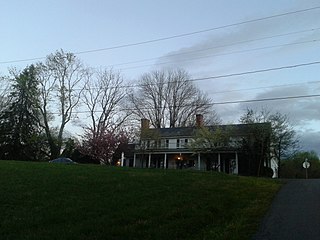
Cartersville Historic District is a national historic district located at Cartersville, Cumberland County, Virginia. It encompasses 51 contributing buildings and 2 contributing sites in the village of Cartersville. Most of the buildings date to the turn of the 20th century, with a number of late-18th- and 19th-century dwellings and former taverns, two churches, a few commercial buildings, a post office, and a former school. Notable buildings include the Deanery (1780s), Glaser House (1790s), Baptist Parsonage (1790s), Cartersville Tavern, Cartersville Baptist Church, St. Catherine's Catholic Church (1910), Cartersville Methodist Episcopal Church (1883), Cartersville Post Office (1910), Cartersville Bank, Culbertson House, H. T. Harrison House, and W. E. Robinson House, Newstead Manor.

Clifton Forge Residential Historic District is a national historic district located at Clifton Forge, Alleghany County, Virginia. The district encompasses 728 contributing buildings and two contributing sites in a predominantly residential section of Clifton Forge. It primarily includes single-family frame vernacular dwellings dating to the turn-of-the 20th century. They are vernacular interpretations of a variety of popular architectural styles including Queen Anne, Colonial Revival, and Bungalow. Notable non-residential buildings include the Clifton Forge High School (1928), First Baptist Church, Main Street Baptist Church (1921), First Christian Church (1906), Presbyterian Church (1907), Methodist Church (1908–1910), Clifton Forge Baptist Church (1912), Clifton Forge Woman's Club (1939), and Clifton Forge Armory (1940–1941). Memorial Park and Crown Hill Cemetery are contributing sites. Located in the district and separately listed is the Jefferson School.

Ashton Heights Historic District is a national historic district located in Arlington County, Virginia. Today, the Ashton Height Historic District contains 1,097 contributing buildings, one contributing site, and one contributing structure in a residential neighborhood in North Arlington.

Cifax Rural Historic District is a national historic district located near Cifax, Bedford County, Virginia. It encompasses 51 contributing buildings, 7 contributing sites, and 2 contributing structures. The district includes the dwellings and outbuildings of prominent families, the houses of the poor and middling farmers and the laborers who in part depended on them for employment, and the stores, schools, and churches that served them. Notable buildings include the Dillard-Coffey House, Logwood-Williams House, Old Nazareth Methodist Episcopal Church, Poplar Springs Baptist Church, Cifax School, The Cedars, Noell-Lankford House, Poindexter-Ellett-Higginbotham Farm, and Glen Alpine designed by architect Pendleton S. Clark with landscaping by Charles F. Gillette.

Bear's Den Rural Historic District is a national historic district located at Bluemont, Clarke County and Loudoun County, Virginia. It encompasses 152 contributing buildings, 12 contributing sites, 8 contributing structures, and 1 contributing object. The district includes a collection of late-19th- and early-20th-century dwellings that were constructed primarily as summer homes by wealthy Washingtonians who were attracted by the mountain's cooler summer climate. Their architecture reflects a number of popular styles, primarily American Craftsman / Bungalow, Colonial Revival, and Queen Anne styles. Other contributing buildings include: farm outbuildings such as barns and stables; domestic outbuildings such as spring houses, meat houses, guest cottages, root cellars, and garages; a former school; and a former church. The contributing sites include the ruins of buildings; including picnic shelters, above-ground cisterns, an old road bed; and the contributing object is a county boundary marker.

Bristersburg Historic District is a national historic district located at Bristersburg, Fauquier County, Virginia. It encompasses 19 contributing buildings, 1 contributing site, 1 contributing structure, and 1 contributing object in the rural crossroads of Bristersburg. They include three dwellings, a church, a school, and three stores. Notable buildings include the Tulloss Brothers Store, Zoar Baptist Church (1852), Bristone House, Compton’s Store, Eskridge House, The Bristersburg School (1910) and Payne's Store.

Casanova Historic District is a national historic district located at Casanova, Fauquier County, Virginia. It encompasses 32 contributing buildings in the rural crossroads of Casanova. They include a variety of late-19th and early-20th century dwellings, the former Casanova Store, a two-story stone mill converted to a dwelling, the Gothic Revival style Grace Church Parish Hall, a former school, and a former garage converted to a post office in the 1950s.

Markham Historic District is a national historic district located at Markham, Fauquier County, Virginia. It encompasses 44 contributing buildings and 4 contributing sites in the rural villages of Farrowsville and Markham. The majority of resources in the district were constructed in the mid- and late 19th century and include multiple dwellings, a hotel, as well as commercial buildings, and a train station. The district also contains early-20th-century dwellings. Notable buildings include Mountain View, Wolfs Crag, Rosebank, Markham School (1918), the 1819 stone Upper Goose Creek Church, and the former Markham Freight Station.

Sumerduck Historic District is a national historic district located at Sumerduck, Fauquier County, Virginia. It encompasses 19 contributing buildings and 1 contributing site in the rural hamlet of Sumerduck. The Reconstruction-era district includes dwellings that date from the late-19th to the mid-20th centuries, stores, churches, a post office, a school, and a public space for meetings. Notable buildings include the Tulloss House, the Henry Broadus Jones House also known as the Santa Claus House or the House of the Seven Gables, the restored Embrey-Mills House (1880s), the Steven Jacobs House, the Union Primitive Baptist Church, Sumerduck Baptist Church (1915), a former school (1887), and Sumerduck Trading Company.
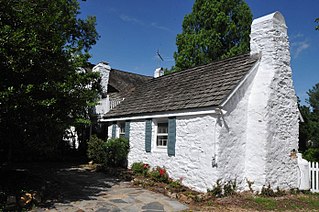
Rectortown Historic District is a national historic district located at Rectortown, Fauquier County, Virginia. It encompasses 76 contributing buildings, 3 contributing sites, and 2 contributing structures in the rural village of Rectortown. The district includes dwellings dating back to the 18th century, churches, a school, an Odd Fellows hall, a post office, multiple commercial buildings, and several cemeteries that illustrate the town's growth and development. Notable buildings include the Maidstone Ordinary, the Rector-Slack Log House, the Ashby House, the Georg Mann House, The Brick Store House, Rector's Warehouse and Station, Denham, Maidstone, Rectortown United Methodist Church (1894), the Jackson-Grant House (1924), Slack's Store (1890), and the Mt. Olive Odd Fellows Lodge (1935).
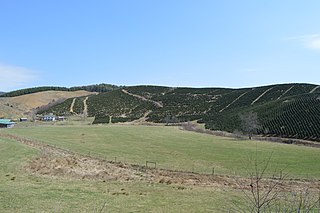
Spring Valley Rural Historic District is a national historic district located near Fries, Grayson County, Virginia. The district encompasses 184 contributing buildings, 3 contributing sites, and 1 contributing object in the wooded and agricultural northeastern corner of Grayson County. It includes mostly frame or log structures, with a few brick buildings, and several well-preserved examples of early-19th century log dwellings still in use. Notable buildings include the Knob Fork Primitive Baptist Church, William Bourne House "Walnut Hill", Austin King House, Tomlinson House, O'Donnell Place, Ephraim Boyer House, John Fielder Farmhouse, Ebenezer Methodist Church and Cemetery, Spring Valley Academy, Glenn Cornett House (1904), and Phipps Bourne Farmstead (1909). Located in the district is the separately listed Stephen G. Bourne House.
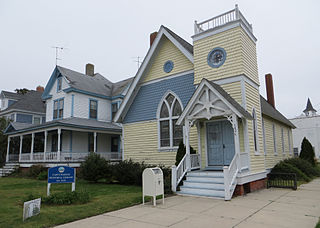
Cape Charles Historic District is a national historic district located at Cape Charles, Northampton County, Virginia. The Town was surveyed by the Virginia Department of Historic Resources in 1989, and a National Register Historic District was created and listed on the National Register of Historic Places.
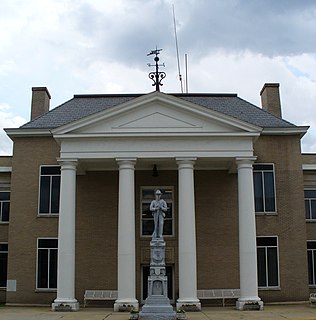
Tazewell Historic District is a national historic district located at Tazewell, Tazewell County, Virginia. The district encompasses 112 contributing buildings in central business district and surrounding residential area of the town of Tazewell.

Covington Historic District is a national historic district located at Covington, Virginia. The district encompasses 108 contributing buildings, 1 contributing site, and 1 contributing structure in the historic core of the city of Covington. It includes late-19th and early-20th-century commercial buildings, dwellings that date from around 1820 until 1940, and governmental, educational, religious, industrial, and transportation-related buildings. Notable buildings include Merry Stand, the James Burk House (1824), Callaghan House (1840s), William W. Lawrence House (1850s), Rinehart Building, Covington Savings Bank (1910s), I. O. O. F. Building, Covington Post Office (1914), Hotel Collins (1910), Hippodrome Theater (1920s), C&O Railway and Freight Station (1914-1915), Alleghany County Courthouse (1910), Alleghany County Jail, Sacred Heart Catholic Church, Emmanuel Episcopal Church, First Presbyterian Church (1924), and Covington Baptist Church (1902).
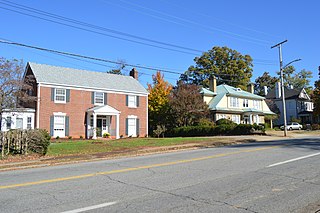
East Church Street–Starling Avenue Historic District is a national historic district located at Martinsville, Virginia. It encompasses 117 contributing buildings, 1 contributing structure, and 1 contributing object in a residential section of Martinsville. The buildings range in date from the range in date from the mid 1880s to the mid-1950s and include notable examples of the Tudor Revival and Colonial Revival styles. Notable buildings include the James Cheshire House, the Obidiah Allen House, John W. Carter House (1896), Christ Episcopal Church (1890s), G.T. Lester House or the “Wedding Cake House” (1918), John W. Townes House, Vaughn M. Draper House, and Martinsville High School (1940) and Gymnasium Building (1928). Located in the district are the separately listed John Waddey Carter House, Scuffle Hill, and the Little Post Office.

The Brookland Park Historic District is a national historic district located at Richmond, Virginia. The district encompasses 1,157 contributing buildings located north of downtown Richmond and Barton Heights. The primarily residential area developed starting in the late-19th century as one of the city's early “streetcar suburbs.” The buildings are in a variety of popular late-19th and early-20th century architectural styles including frame bungalows and American Foursquare. The neighborhood is characterized by frame dwellings with a single-story porch spanning the facade, and either Colonial Revival or Craftsman in style, moderate in scale, with understated materials and stylistic expression. Notable non-residential buildings include the North Side Branch building, Brookland Inn, former A&P Grocery Store, North Side Junior High School, Barack Obama Elementary School, St. Paul's School building (1923), St. Philip's Episcopal Church, First African Baptist Church (1922), and Garland Avenue Baptist Church.

Downtown Salem Historic District is a national historic district located at Salem, Virginia. The district encompasses 34 contributing buildings and 1 contributing site in downtown Salem. The district includes primarily mixed-use commercial buildings, but also includes churches, dwellings, a courthouse, a post office, a library, a park, and the covered stalls of a farmer's market. The buildings mostly date from the late-19th and early-20th century and are in a variety of popular architectural styles including Greek Revival, Italianate, and Queen Anne. Notable buildings include the Stevens House or "Old Post House" (1820s-1830s), Kizer-Webber Building (1883-1886), Duval-Oakey House (1891-1898), Salem High School, Old Salem Municipal Building and Fire Department (1925), Quality Bakery Building, Olde Newberry Building (1929), Salem Theater, and James J. True Building (1927). Located in the district are the separately listed Old Roanoke County Courthouse, Salem Presbyterian Church, and Salem Post Office.

The Forestville Historic District is a national historic district located at Forestville, Shenandoah County, Virginia. The district encompasses 84 contributing buildings, 4 contributing sites, and 1 contributing structure in the 19th century mill village of Forestville. The vernacular buildings represent a variety of popular architectural styles including Greek Revival, Queen Anne, and Italianate. The buildings date from the late-18th to mid-20th centuries and primarily include log and wood-frame single dwellings, with domestic and agricultural dependencies, that dominate the district are substantiated by a gristmill, two commercial buildings. Also in the district are a church, a cemetery, a post office, two doctors' offices, and a school.































